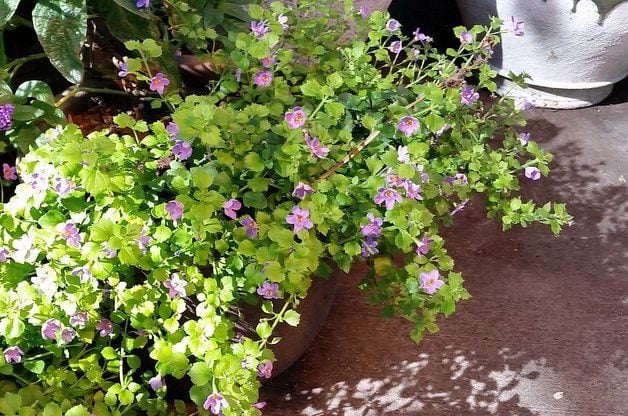Bacopa is a genus of aquatic plants known for their beautiful flowers and ease of care. There are over 100 species of bacopa though not all are commonly grown as aquarium or garden plants. The most popular types have showy flowers trailing growth habits, and adaptability to a wide range of conditions.
Overview of Bacopa Plants
Bacopa plants are herbaceous perennials or annuals from tropical and subtropical regions around the world. Most species originate from Africa Asia Australia, and North and South America. Bacopas grow in wetlands, along streams, and even fully submerged in still water bodies.
In home aquariums, bacopa provides lush foliage, vivid flowers, and help absorb excess nutrients. It flourishes with medium to high lighting. For ponds and water gardens, bacopa adds vibrant color as marginal plants or floating in shallow water. Several species thrive as houseplants or annual bedding plants if kept consistently moist.
Below are some of the most popular types of bacopa plants available:
Trailing Bacopa
-
Bacopa caroliniana – Also called lemon bacopa, this semi-aquatic species has light green, lemon-scented foliage. Tiny blue or white flowers bloom spring to fall. It trails to 36 inches. Hardy in zones 9-11.
-
Bacopa monnieri – Known as water hyssop, this bacopa has rounded leaves and small white flowers. It creeps along the water’s edge or trails from containers. Hardy to zone 10.
-
Bacopa salzmannii – A trailing bacopa with ovate leaves and big blue flowers. It spreads to 20 inches and blooms spring through summer. Grow as an annual or indoor plant.
-
Bacopa australis – Blue water hyssop is a quick-spreading aquarium plant with small blue flowers. Submerge or grow emersed. It adapts to low or highlight.
-
Bacopa myriophylloides – Also called parrot leaf bacopa, its foliage resembles watermelon peperomia. Lavender flowers appear in summer. Trails 1 foot long. Hardy to zone 9.
Compact Bacopa
-
Bacopa lanigera – This mat-forming bacopa has fuzzy, succulent leaves and tiny blue flowers in summer. It grows just 3-6 inches tall and spreads readily. Hardy to zone 9.
-
Bacopa compact – A petite variety reaching just 3 inches tall. Its fine-textured leaves form a tight carpet covered in blue flowers. Thrives in containers or as a houseplant.
-
Bacopa platinum – Called white moneywort, platinum bacopa bears white flowers on short cascading stems up to 6 inches long. Makes a neat, mounding ground cover. Grow as an annual.
Variegated Bacopa
-
Bacopa sp. ‘Marble’ – This uniquely marked bacopa has white-splashed green leaves with purple undersides. Lavender flowers complement the foliage. Grows up to 6 inches tall.
-
Bacopa lanigera ‘Variegata’ – Fuzzy green and white leaves make up this compact, spreading bacopa. Pale blue flowers add color. Hardy in zones 9-11.
-
Bacopa ‘Giant Snowflake’ – A vigorous trailing bacopa with big, showy white blooms all season long. Stems reach up to 36 inches. Grow in containers or ponds.
-
Bacopa ‘Snowstorm Blue’ – Trailing stems to 3 feet are covered in abundant lavender-blue blooms. Foliage is solid green. Makes a lovely addition to mixed containers.
Growing Conditions
Most species of bacopa prefer warm temperatures, high humidity, and moist soil or aquatic conditions. Plants grown outdoors are typically hardy in USDA zones 9-11 only. Provide partial sun to part shade. Regularly trim long stems to encourage bushy, compact growth.
For indoor bacopa houseplants, place in a bright window and keep soil consistently damp. Apply diluted liquid fertilizer every 2-4 weeks in spring and summer. Propagate by stem cuttings.
In aquarium settings, several bacopa varieties make excellent background plants or trailing accents. They thrive with added CO2 and liquid fertilization. Propagate by cutting side shoots.
Companion Plants
Bacopa’s trailing forms and petite flowers combine beautifully with many other annuals and perennials:
- Wax begonias
- Geraniums
- Petunias
- Marigolds
- Impatiens
- Coleus
- Sweet alyssum
- Dichondra
- Creeping jenny
- ivy
For ponds and water gardens, grow alongside:
- Water lilies
- Floating plants like water lettuce
- Marginal plants such as canna and umbrella palm
Problems and Pests
Overall, bacopa plants are relatively trouble-free. Potential issues to watch for include:
- Powdery mildew
- Root rot from overwatering
- Lack of flowering due to insufficient light or nutrients
- Leggy, overgrown stems if not trimmed back regularly
Pest problems are rare but can include aphids, mealybugs, scale, or spider mites. Immediately remove any damaged leaves or stems to prevent spreading.
With their diversity of form, foliage, and flowers, bacopa plants are prized additions to gardens, patios, aquariums, and more. Their adaptability to various conditions makes them widely adaptable. Give bacopa ample moisture and light, and they will reward you with cascading mounds of lush greenery and colorful blooms.

Bacopa Flower Care and Growing Tips
Snowstorm Giant Snowflake bacopa When planting containers, I like to use a trailing plant. In the past,
- Bacopa (Sutera cordata)
- Zones 9 to 11 or annual
- Light needs: Sun or partial shade

BACOPA MONNIERI, MONEYWORT, BACOPA CAROLINIANA – AQUARIUM STEM PLANT GUIDE
FAQ
How many species of Bacopa are there?
What is the difference between Bacopa caroliniana and Bacopa australis?
What is the difference between Bacopa monnieri and Bacopa Caroliniana?
Does Bacopa like full sun or shade?
